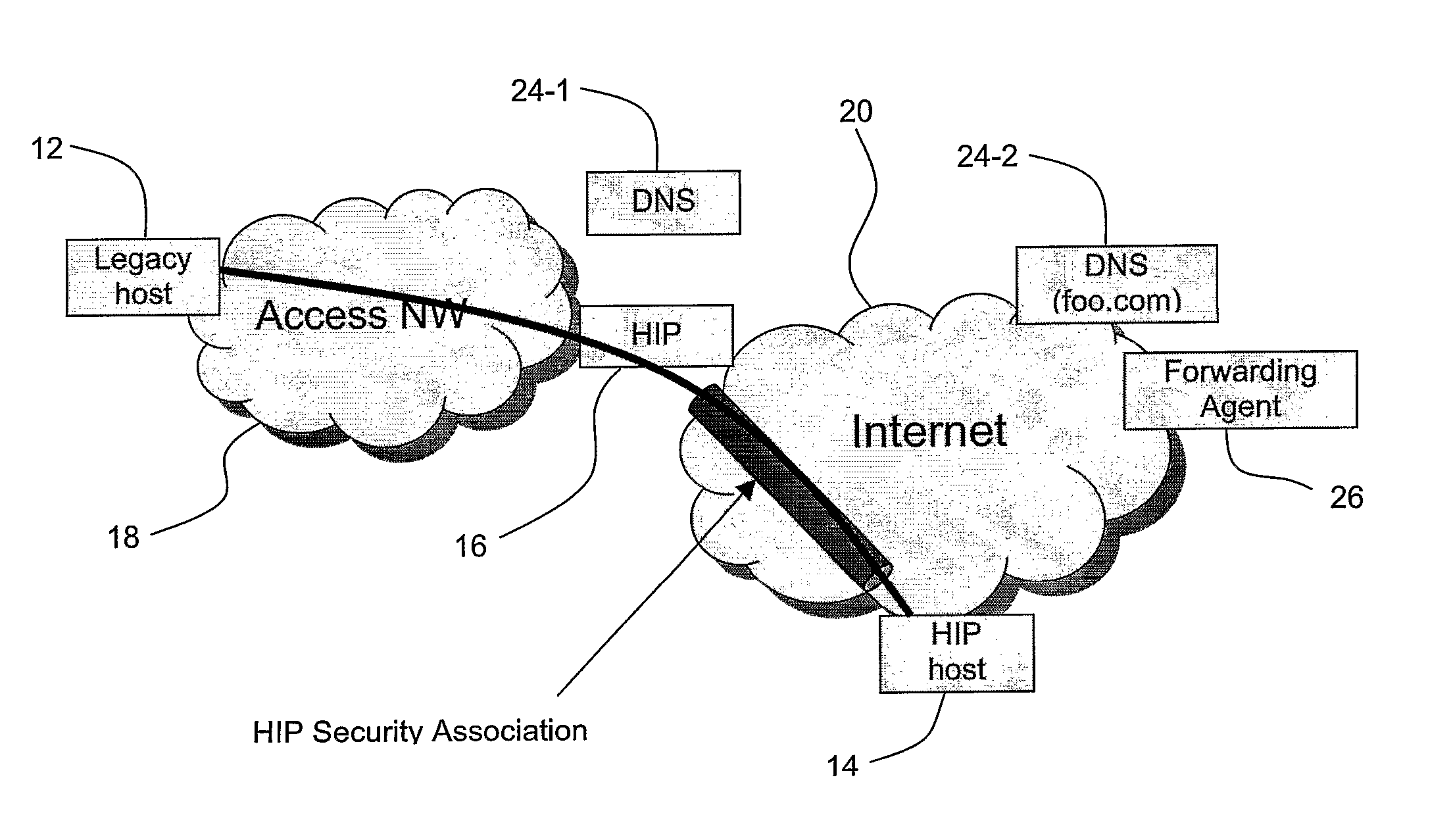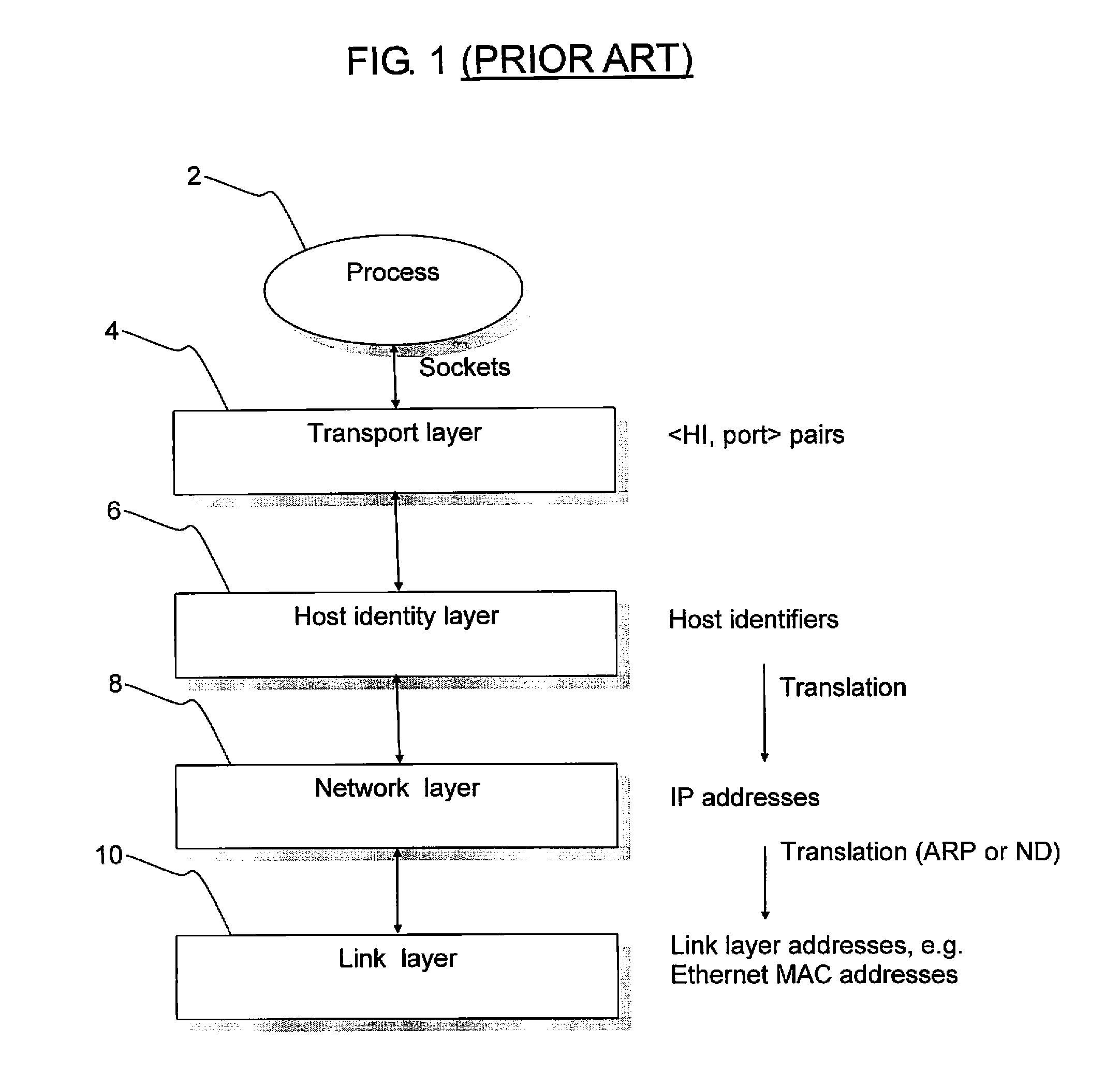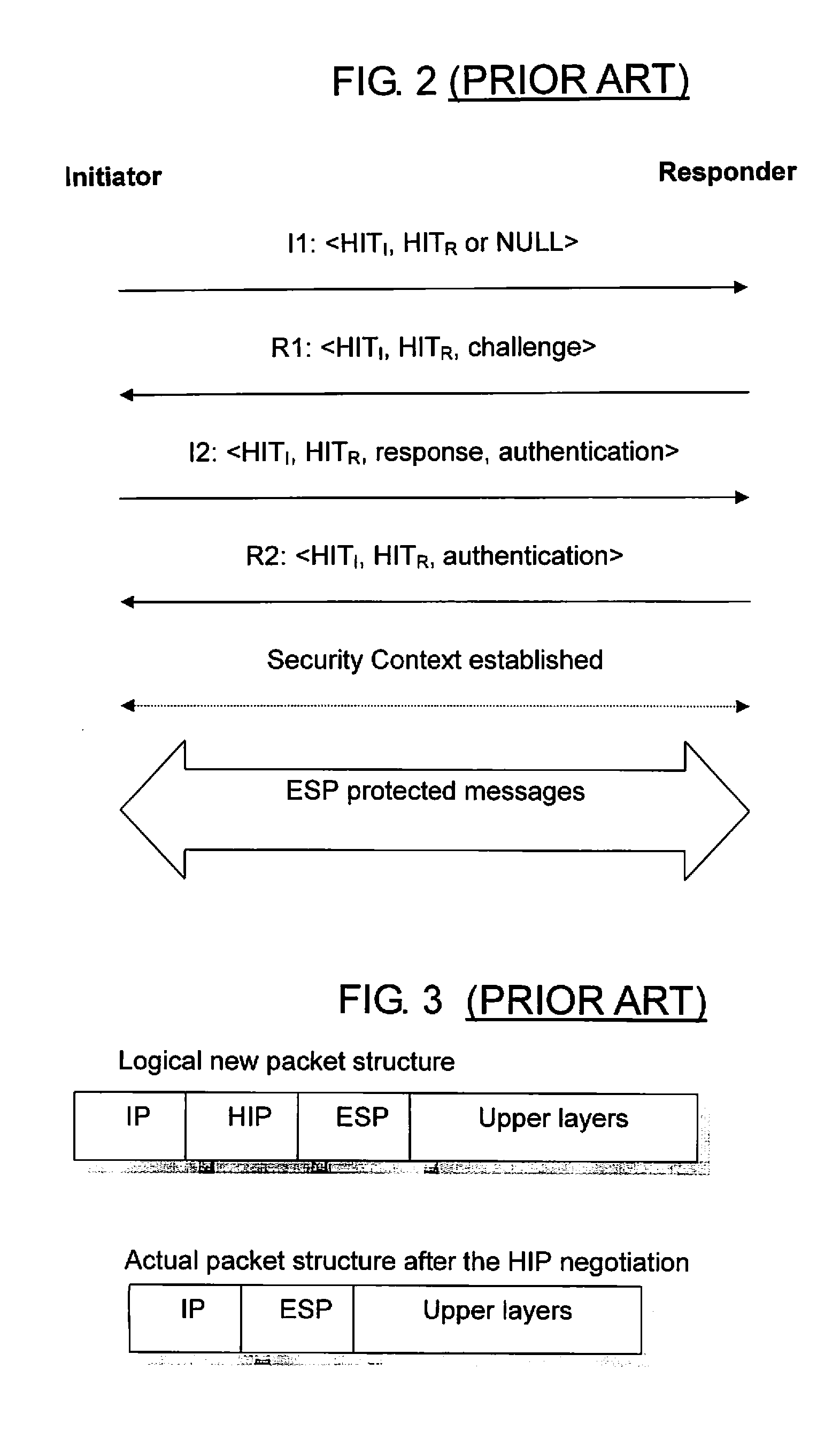Host identity protocol method and apparatus
a protocol and host technology, applied in the field of host identity protocol methods and apparatuses, can solve the problems of increasing the complexity of the situation, affecting the security of the system, and the immobility of the computer,
- Summary
- Abstract
- Description
- Claims
- Application Information
AI Technical Summary
Benefits of technology
Problems solved by technology
Method used
Image
Examples
Embodiment Construction
[0082]Embodiments of the present invention will be described within the framework of the GPRS / UMTS network architecture shown in FIG. 6. The principles underlying an embodiment of the present invention are equally applicable to UMTS as they are to GPRS.
[0083]As mentioned above, GPRS has been designed as an extension to the existing GSM network infrastructure, with the aim of providing a connectionless packet data service. GPRS introduces a number of new functional elements over GSM that support the end-to-end transport of IP-based packet data, as will be described below.
[0084]The communications system 100 shown in FIG. 6 comprises a mobile station (MS) 102 in communication with a Base Transceiver Station (BTS) 104 which in turn communicates with a Base Station Controller (BSC) 106. The BTS 104 and BSC 106 together make up the Base Station Subsystem (BSS). At the BSC 106, a Packet Control Unit (PCU, not shown) differentiates circuit switched data destined for a telephony network 110 ...
PUM
 Login to View More
Login to View More Abstract
Description
Claims
Application Information
 Login to View More
Login to View More - R&D
- Intellectual Property
- Life Sciences
- Materials
- Tech Scout
- Unparalleled Data Quality
- Higher Quality Content
- 60% Fewer Hallucinations
Browse by: Latest US Patents, China's latest patents, Technical Efficacy Thesaurus, Application Domain, Technology Topic, Popular Technical Reports.
© 2025 PatSnap. All rights reserved.Legal|Privacy policy|Modern Slavery Act Transparency Statement|Sitemap|About US| Contact US: help@patsnap.com



